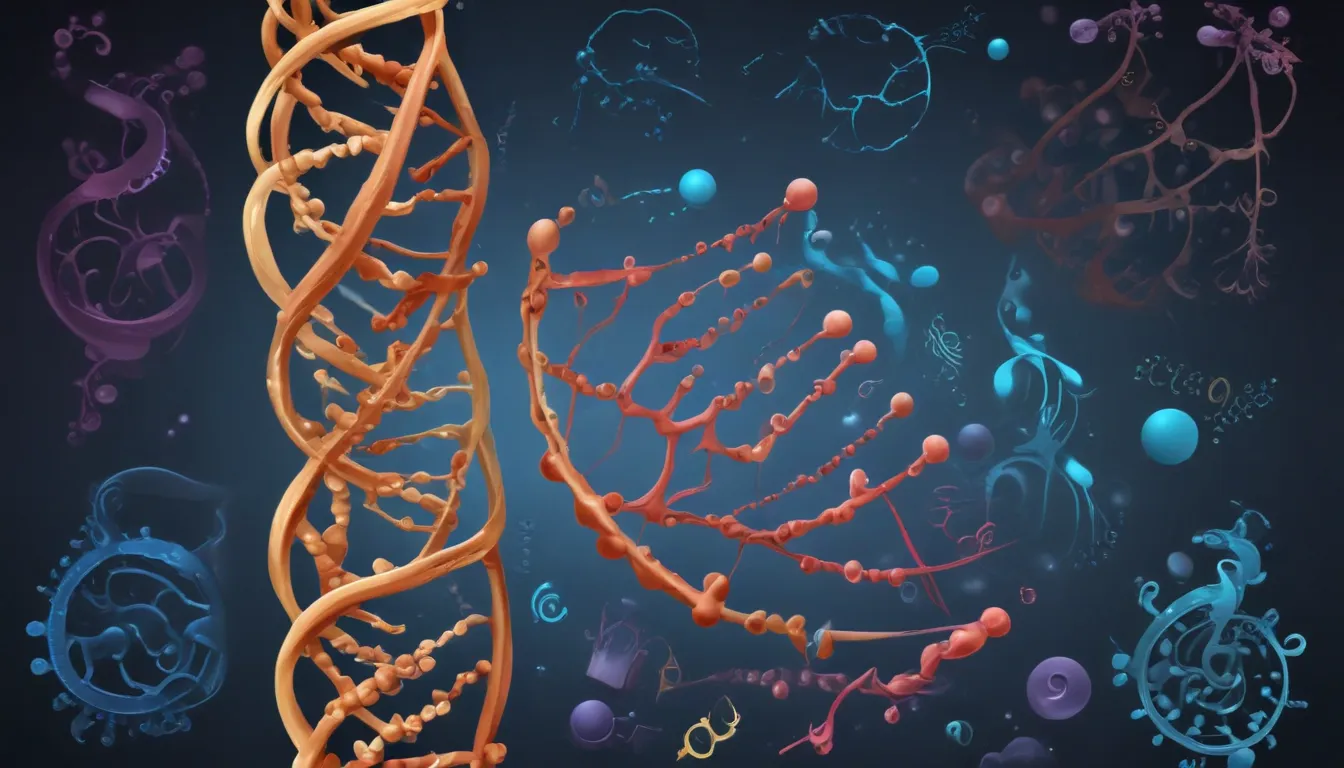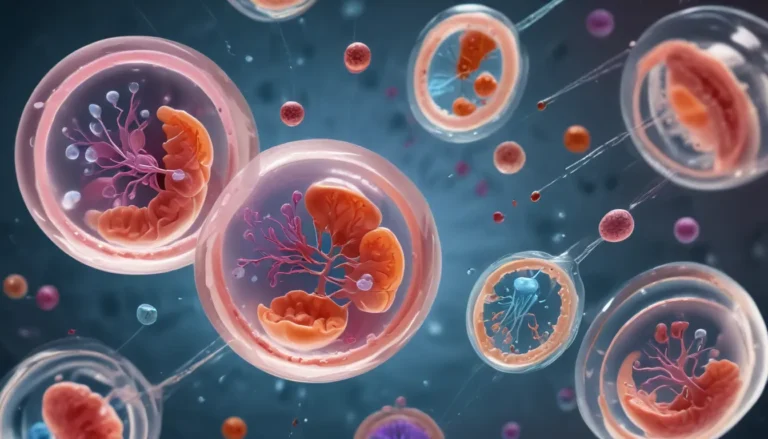A Note About Images: The images used in our articles are for illustration purposes only and may not exactly match the content. They are meant to engage readers, but the text should be relied upon for accurate information.
Welcome to the captivating world of protein synthesis, a fundamental process that underpins the very essence of life. From the intricate dance of molecules to the delicate balance of regulation mechanisms, protein synthesis is a symphony of biological intricacy. In this article, we will unravel eight enigmatic facts about protein synthesis that will not only leave you in awe but also deepen your understanding of this vital biological process. So, let’s embark on this educational journey and explore the remarkable world of protein synthesis!
The Central Dogma of Biology: DNA, RNA, and Proteins
At the core of protein synthesis lies the Central Dogma of Biology. This foundational principle states that DNA carries the genetic information, which is transcribed into RNA and ultimately translated into proteins. Like a recipe for life, DNA acts as the cookbook, mRNA delivers the instructions, and ribosomes serve as the chefs creating the proteins. This elegant process forms the basis of all biological functions, from growth to repair, and the production of essential enzymes and hormones.
mRNA: The Messenger of Genetic Information
Messenger RNA (mRNA) plays a pivotal role in the intricate dance of protein synthesis. It carries the genetic information from DNA, stored in the nucleus, to the ribosomes in the cytoplasm where proteins are synthesized. Through this crucial step, the genetic code is decoded and translated into a functional protein, essential for the myriad biological functions within the cell.
Ribosomes: The Protein Factories of the Cell
Ribosomes are the cellular organelles tasked with the intricate process of protein synthesis. These molecular factories, composed of RNA and proteins, are found either free-floating in the cytoplasm or attached to the endoplasmic reticulum. They meticulously read the mRNA sequence, catalyzing the formation of peptide bonds between amino acids to assemble the protein chain with precision.
tRNA and Amino Acids: The Building Blocks of Proteins
Transfer RNA (tRNA) molecules are the unsung heroes of protein synthesis, ferrying specific amino acids to the ribosomes. Each tRNA bears an anticodon that matches a specific codon on the mRNA, ensuring the accurate incorporation of amino acids into the growing protein chain. This precise delivery system guarantees the fidelity of protein synthesis.
The Three Stages of Protein Synthesis: Initiation, Elongation, and Termination
Protein synthesis unfolds in three distinct stages: initiation, elongation, and termination. During initiation, the ribosome assembles around the mRNA, commencing at the start codon. Elongation involves the sequential addition of amino acids to the growing protein chain, guided by the mRNA sequence. Finally, termination occurs when the ribosome encounters a stop codon, culminating in the release of the newly synthesized protein.
Post-Translational Modifications: Fine-Tuning Protein Function
Proteins often undergo post-translational modifications to refine their functionality. These modifications include folding, cleavage of certain segments, addition of chemical groups, or interactions with other proteins to form complex structures. These subtle alterations are critical for ensuring the proper functioning of proteins within the cellular milieu.
Protein Folding: The Key to Functional Proteins
The process of protein folding is a mesmerizing ballet of molecular interactions that dictate the three-dimensional structure of a protein. This intricate folding pattern is essential for the stability and functionality of the protein, ensuring its proper functioning within the cellular environment.
Errors in Protein Synthesis: Consequences of Molecular Missteps
Despite the precision of the protein synthesis machinery, errors can occur with serious consequences. Mutations in the DNA sequence or mistakes during transcription and translation can result in misfolded or non-functional proteins, which can have detrimental effects on the organism. Quality control mechanisms within cells strive to identify and address these errors to maintain cellular homeostasis.
Conclusion: Unveiling the Elegance of Protein Synthesis
In conclusion, protein synthesis stands as a testament to the complexity and elegance of life’s building blocks. This intricate biological process plays a pivotal role in the functioning of living organisms, from simple cellular functions to complex biological phenomena. By delving into the mysteries of protein synthesis, we gain not only a deeper understanding of biology but also insights that extend into fields such as medicine and biotechnology.
FAQs: Unraveling Common Queries About Protein Synthesis
-
What is protein synthesis?
Protein synthesis is the process by which cells produce proteins, utilizing the genetic information encoded in DNA through the transcription and translation of genetic material. -
Where does protein synthesis occur in cells?
Protein synthesis occurs within ribosomes, located in the cytoplasm of cells, where mRNA is translated into functional proteins. -
What is the role of ribosomes in protein synthesis?
Ribosomes serve as the molecular machinery responsible for assembling amino acids into precise sequences to form functional proteins, following the instructions encoded in mRNA. -
How are amino acids delivered to the ribosomes during protein synthesis?
Amino acids are transported to the ribosomes by transfer RNAs (tRNAs), each carrying a specific amino acid that matches the codons on mRNA, ensuring accurate protein synthesis. -
Can protein synthesis be regulated?
Yes, protein synthesis can be regulated through various mechanisms that control the production of proteins at both transcriptional and translational levels, influencing the quantity and timing of protein synthesis. -
What are the consequences of errors in protein synthesis?
Errors in protein synthesis can lead to the production of misfolded or non-functional proteins, potentially contributing to the development of diseases and disorders, emphasizing the importance of maintaining accuracy in the process. -
Are there inhibitors or drugs that target protein synthesis?
Yes, inhibitors and drugs that target specific stages of protein synthesis exist, such as antibiotics that interfere with bacterial ribosomes or drugs utilized in cancer treatment targeting protein synthesis in cancer cells. -
How does protein synthesis relate to genetic disorders?
Genetic disorders can stem from mutations or abnormalities in genes involved in protein synthesis, disrupting the accurate production of proteins necessary for normal cellular function, leading to various genetic disorders.
As we continue our exploration of the mysteries surrounding protein synthesis, we unravel the intricate web of molecular interactions that sustain life and drive complex biological processes. Together, let us embark on a journey of discovery, delving deeper into the fascinating realm of biology and unveiling the elegant mechanisms that underpin the diversity of life on Earth.






